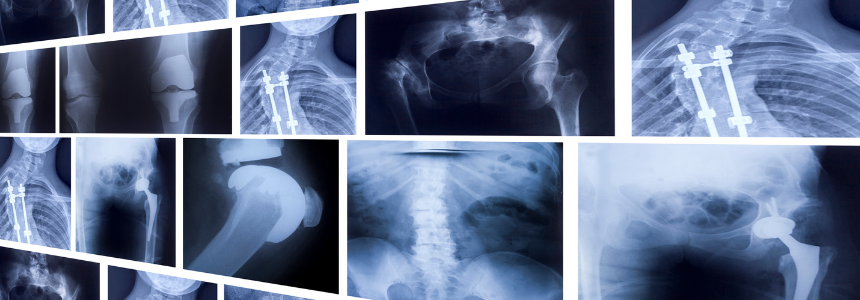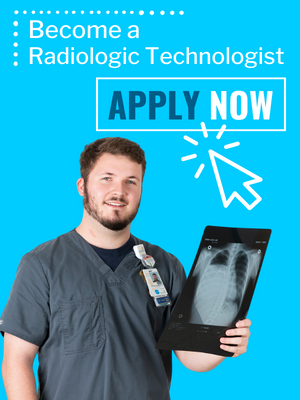
RADIOGRAPHY CLINICAL REQUIREMENTS
START HERE. LEARN LOCAL. MOVE FORWARD.
Clinical Travel
In order to meet clinical education requirements, each student enrolled will travel to different clinical sites during the five-semester program. The farthest site a student will be required to travel to is 50 miles (one way) from the college campus in Morehead City. Depending on where a student lives, the actual mileage involved may be greater than or less than what has been stated from the college campus. Also, students will be required to complete a minimal number of evening and weekend clinical rotations as part of their clinical education.
Clinical Assignments
Students enrolled in the program are required to complete clinical assignments at the clinical sites on daylight (7:00 AM – 7:00 PM), evening, and weekend rotations.
Technical Performance Standards
Please read the following standards carefully and make an assessment of your ability to perform the required technical performance standards listed below with or without reasonable accommodations.
Walking/Standing: Constantly walk or stand for extensive periods of time, to transport equipment, assist patients, perform radiologic exams, and assist the radiologists.
Use of All Extremities: Constantly use both hands and legs to ensure patient safety when (Hands/Legs) lifting, moving and transporting patients from a wheelchair/stretcher to the radiographic table and back again without causing undue pain or discomfort to the patient or oneself. Both extremities are necessary in the safe manipulation and operation of equipment and in the transporting of patients, x-ray equipment, and supplies. Must be able to reach above shoulder level.
Tactile Sensation: Utilize his/her hands and fingers in order to position patients, grasp and easily manipulate equipment, and in assessing the patient. Must be able to palpate a pulse.
Lifting/Carrying: Frequently engage in lifting/carrying activities to move and transport patients, equipment and supplies. Maximum weight for lifting is established at 50 pounds. Varying weights are encountered when lifting and transporting patients. The individual is expected to request assistance when lifting and repositioning patients. The estimated weight for carrying is established at 25 pounds.
Pushing/Pulling: Frequently utilize pushing and pulling in the transfer of patients, equipment and supplies. They are necessary in the manipulation of x-ray equipment into proper positions for radiologic procedures including fixed and mobile units.
Reaching (High-Low Level): Frequently reach, twist and bend in moving and positioning patient’s equipment and supplies. They are also required in operating the control panel for manipulation of technical and exposure factors. They are also required in responding to emergency situations and in the delivery of trauma radiological procedures where the patient’s physical state may be jeopardized if proper care is not administered in a timely fashion.
Climbing Stairs: Occasionally climb stairs to take equipment, radiographs, etc., to other floors.
Stooping: Frequently stoop to position equipment, assist patients, or locate and obtain supplies.
Sitting: Occasionally sit to perform radiologic exams, record data on patient’s examination request and schedule radiologic examinations.
Reading Comprehension: Read and correctly carry out written instructions given on requisitions, treatment charts, notes and other records.
Hearing Comprehension: Understand and correctly carry out oral instructions given by instructors and clinical personnel including in the special procedures suite or operating room setting where all personnel are wearing surgical masks. Monitor equipment and background sounds during equipment operation and report unusual or abnormal sounds to the appropriate person.
Vision: Correctly read technique charts, read and select correct exposure factors at control consoles, and read and set correct distances and other equipment settings at the radiographic and fluoroscopic towers. Visually monitor patient for retention of correct position, correct breathing, motion or evidence of physical or emotional distress during the performance of radiologic procedures, including in dimly lighted environments. Monitor and evaluate the vital signs of a patient including the taking of temperatures and reading standard thermometers, taking blood pressure, monitoring respiration, and pulse rate. Evaluate radiographs for technical quality including visual perception of density levels, contrast levels, evidence of distortion, and evaluation of minute structural details for evidence of blur.
Communication: Communicate clearly, both orally and in writing, with the patient, patient’s family, clinical personnel, and others in order to obtain or disseminate information relevant to patient care and work duties.
Interpersonal Skills: The radiography student must possess interpersonal skills sufficient to interact with individuals, families, and groups from a variety of social, emotional, cultural, and intellectual backgrounds.
Emotional Abilities: Demonstrate emotional stability and mental alertness in day-to-day interactions with patients, visitors, staff and peers in high stress/pressure situations in the radiologic environment.
PROGRAM CONTACT
Elaine Postawa
Chair of Radiography
Phone: (252) 222-6165
Email: postawae@carteret.edu



